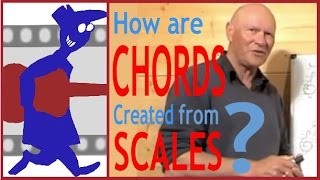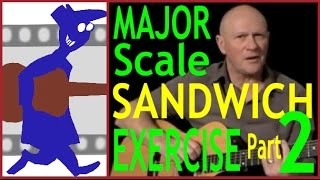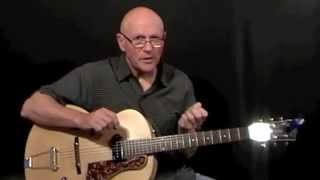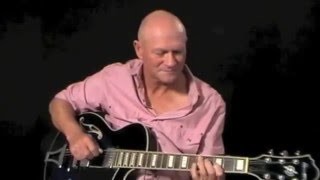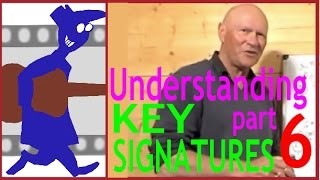Basic secret to blues rhythm guitar
Published on 26 January 2016
For more information from the source site of this video please visit: http://secretguitarteacher.com/youtube/intermediate/blues/sw7tCkpCtI0/83578512-basic-secret-to-blues-rhythm-guitar.php
Once we have learnt how to strum our way round a 12-bar blues rhythm chart the next thing to get a handle on is how to play basic shuffle patterns.
Shuffle patterns have many varieties from the slow blues...
Straight 8 Rhythm n Blues...
The more complex rock n roll beat...
To the breakneck style of rockabilly...
Plus almost infinite variations on each of these.All based on the development of one simple idea.
The basic shuffle pattern is often called the added 6th shuffle pattern.
As we mentioned in the lesson on power chords all numbers used in chord symbols reference the Major scale. We start with the E major scale pattern as shown in this diagram. We isolate the key note E, and the fifth note B and play them together to make a two note power chord rooted on the open E string like this.Then on the second and fourth beat of the bar we Add the Sixth note of the scale.And that's how to play the basic added sixth shuffle pattern over an E chord. In TAB form it looks like this:
Although simple, technically there are a couple of details to observe that will really help you improve the sound of your shuffle pattern. Firstly, on the left hand. Allow your first finger to collapse lightly across the remaining strings to mute them so that they don't resonate or sound if you accidentally hit them
Meanwhile on the picking hand..
First, be absolutely certain that on all eight strokes you are hitting through both the E and the A strings, Then add a little palm muting by letting your picking hand encroach onto the strings from the bridge...
Once you have got that just right you can actually strike the strings a lot harder and that's what gives the shuffle its rhythmic power. It's a bit like driving with the brakes on!
OK so I am going to strongly suggest that you invest a fair amount of time just fine tuning the sound of that basic pattern before moving on. Next let's look at how we move this idea through a 12-bar progression.
First we play 4 bars on E. Then we move the whole idea across one string to play over A like this.Then back to E for two bars. When we come to the B chord, to make things easy to play we invert the idea like this
So the Tab for that looks like this:
Then we jump to a bar of A.Before returning to 2 bars of E to complete the 12-bar. Here's that last line one more time:
Now is a good time to click on the Printout tab In the toolbox to the right of the screen and print off a copy of the Tab sheet for you to follow as you practice this 12-bar sequence through a few times.
Now this is the basic added sixth shuffle which you want to make sure you master really well before making things more complex. Once you are on top of it here are some of the many variations you can experiment with:
Adding the major third note on the bass string... (Talk through -- used on the E and A but not B))
Adding the flatted third to that. Adding the flatted seventh.
So there you go -- a few basic ideas to act as primer -- from there I suggest experimenting using your ears to judge what works and what doesn't.
Later I might film a lesson on rockabilly technique which is a good way to develop these skills to their extreme!
Meanwhile Have fun! See you next lesson
 Steve Stine Guitar Lesson - Understanding the 12-B...
Steve Stine Guitar Lesson - Understanding the 12-B...
 Guitar Lessons create all kinds of ear candy chord...
Guitar Lessons create all kinds of ear candy chord...
 Gibson 61RI SG and Fender 1966 Vibrolux Tone Demo...
Gibson 61RI SG and Fender 1966 Vibrolux Tone Demo...
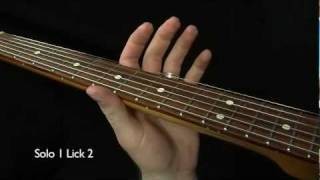 4 Albert King Style Licks
4 Albert King Style Licks
 Blues Guitar Solo Lesson
Blues Guitar Solo Lesson
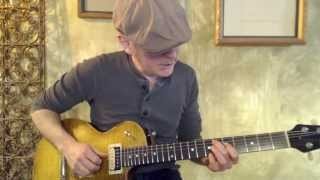 Jeff McErlain's Brooklyn Blues - Earl Hooker Style...
Jeff McErlain's Brooklyn Blues - Earl Hooker Style...
 EarthQuaker Devices The Depths Demo
EarthQuaker Devices The Depths Demo
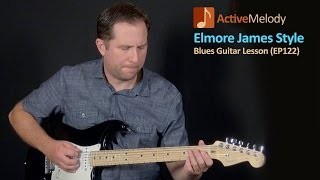 Elmore James Style Guitar Lesson - Simulated Slide...
Elmore James Style Guitar Lesson - Simulated Slide...
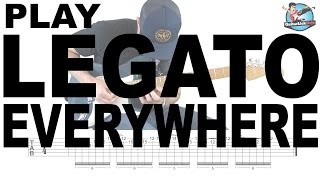 3 Simple Licks to Legato Fretboard Domination - Vo...
3 Simple Licks to Legato Fretboard Domination - Vo...
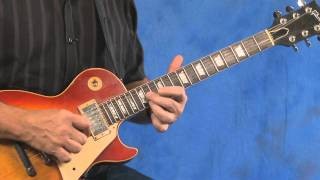 Extended Guitar Solo by Jody Worrell
Extended Guitar Solo by Jody Worrell

